
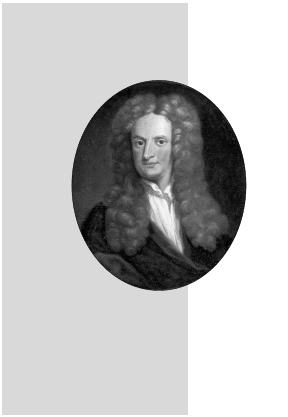
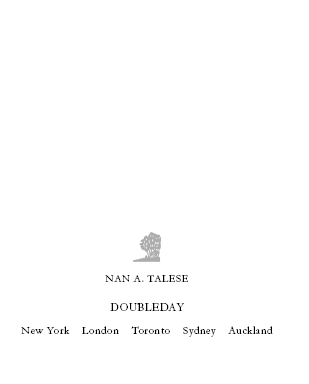
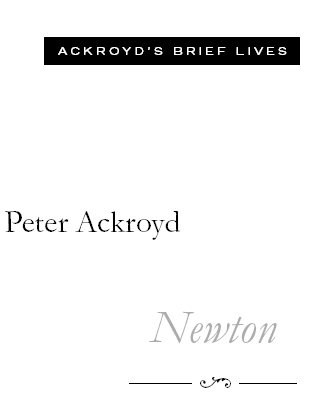
CONTENTS
LIST OF ILLUSTRATIONS
By Thomas Hosmer Shepherd (17921864). Lincolnshire County Council, Usher Gallery, Lincoln, UK
by David Loggan (1633/3592). Private Collection
by Francis Kyte, published by John Bowles, c. 172045. The National Portrait Gallery, London
Private Collection/The Stapleton Collection
by Francis Kyte, published by John Bowles, c. 172045. The National Portrait Gallery, London
Geneve, bibliothque publique et universitaire
by Francis Kyte, published by John Bowles, c. 172045. The National Portrait Gallery, London
by Johannes Kerseboom. Private Collection
Engraving c. 1637. Bibliothque de lAcademie de Medecine, Paris, France/Archive Charmet
MS New Coll 361/2 fol 45v. Reproduced by courtesy of the Warden and Scholars of New College, Oxford
Science & Society Picture Library, Science Museum, London, UK
by Louis-Franois Roubillac (170262). Trinity College, Cambridge, UK
National Portrait Gallery
Trinity College, Cambridge, UK
Private Collection/ Philip Mould, Historical Portraits Ltd., London, UK
c. 1700. OShea Gallery, London, UK
National Portrait Gallery
Ashmolean Museum, University of Oxford, UK
The author and publishers are grateful to the Bridgeman Art Library for help with picture research and for permission to reproduce.
CHAPTER ONE
A Blessed Boy
 I saac Newton, the man who more than any other has shaped modern perceptions of the world, was born at 2 a.m. on the morning of Christmas Day, 1642, outside an obscure village in Lincolnshire from a family of undistinguished yeoman stock. He was a premature and sickly infant. Two women from the household were sent to collect certain items for the child but they sate down on a stile by the way & said there was no occasion for making haste for they were sure the child would be dead before they could get back. At a later date Newton informed a relative that he had been told that when he was born he was so little they could put him into a quart pot & so weakly that he was forced to have a bolster all round his neck to keep it on his shoulders.
I saac Newton, the man who more than any other has shaped modern perceptions of the world, was born at 2 a.m. on the morning of Christmas Day, 1642, outside an obscure village in Lincolnshire from a family of undistinguished yeoman stock. He was a premature and sickly infant. Two women from the household were sent to collect certain items for the child but they sate down on a stile by the way & said there was no occasion for making haste for they were sure the child would be dead before they could get back. At a later date Newton informed a relative that he had been told that when he was born he was so little they could put him into a quart pot & so weakly that he was forced to have a bolster all round his neck to keep it on his shoulders.
Yet the omens were good. A birth on Christmas Day, with its obvious connection to the Saviour, was considered to be blessed. Such a birthday was deemed to be the harbinger of great success in the world. Isaac Newton was an only child. His father had died four months before the son was born, and so the omens were good in another sense: a posthumous child was commonly believed to be the recipient of good fortune. In his adult life Newton considered himself to be unique among men, and the circumstances of his arrival in the world must have encouraged that notion. His survival was considered by him to be a miracle, a harbinger of the other miracles he would perform.
He was born in a small house in the manor of Woolsthorpe-by-Colsterworth. An eighteenth-century drawing shows it to be a solid if undistinguished two-storey house of the English type. The drawing also contains a cow, a horse, and a peasant with his cart, depicting in miniature the rural world in which Newton grew up. The house itself was constructed from the grey limestone of the vicinity and included a kitchen, hall, parlour and upstairs bedrooms. The modern visitor will note that the rooms have low ceilings and stone floors, adding to the generally sober if not exactly sombre atmosphere of the dwelling. Newton was born in the bedroom immediately to the left of the staircase.
The house stands on the side of a small valley made by the River Witham, facing west, and looks over the garden that has become celebrated in world history as the site of Newtons falling apple. The tree itself was long ago felled by the wind. The manor consisted of some hundred acres(31.5 hectares) of woods and fields, a patrimony that Newton would one day inherit. William Stukeley, the eighteenth-century topographer, antiquarian and Newtonian enthusiast who collected all the material on his hero that he could find, described the landscape as one of very delightful valleys and plentiful woods. He added that the springs and rivulets of the purest water abound and that the air of the neighbourhood is exceedingly good. This was the area that produced the greatest genius of the human race.
The ancestry of his immediate family gave no inkling of this greatness. Newton could trace his predecessors only as far back as John Newton, who had lived a century before in the village of Westby just a few miles from Woolsthorpe. The Newtons were husbandmen of Lincolnshire stock who by degrees rose painfully slowly in the social hierarchy of the county and had by Newtons time reached the eminence of yeomen. When on occasions we observe the taciturnity and even surliness of Newton, we may recognise the habits of Lincolnshire farming stock.
His own father, also named Isaac Newton, has no great claim to the attention of posterity. He was a yeoman farmer who looked after the estate and had a certain proprietorial care for the tenants who lived in the small cottages within his domain. He left some five hundred pounds in his will, proving that he had maintained the relative affluence of the family. All the evidence suggests, however, that he could not write his name, like the father of William Shakespeare, thus adding to the myth of genius born in the most unpromising circumstances. Newtons uncle and cousin were also both illiterate. It would have been perfectly possible that, in marginally different circumstances, Isaac Newton himself would never have learned how to read or write.
The family of his mother, Hannah Ayscough, was more genteel in its aspirations. It is the usual familial chemistry of male children who go on to distinguish themselves. Hannahs brother was a clergyman who had studied at Cambridge University. He could not have been very successful in his vocation, however, since he was immured in a rectory only two miles away from Woolsthorpe itself. The Ayscoughs, originally from Rutland, were in fact in a state of sliding gentility. The marriage of Isaac and Hannah reflects their meeting with rural stock on its way up. Isaac Newton was the result.
He was baptised on the first day of the new year, 1643, in the family church at nearby Colsterworth. The widowed mother naturally gave the infant her spouses name of Isaac. The name itself comes from the Hebrew for one who laughs, but the young child could have felt little cause for rejoicing. Just three years after his birth, his mother decided to marry again and separate herself from the infant child. She was betrothed to a neighbouring rector, Barnabas Smith, more than thirty years her senior. The Reverend Smith had no very Christian notion of his stepson, however, and as part of the marriage agreement it was stipulated that the young Newton would remain at Woolsthorpe under the care of his maternal grandmother. Hannah would depart to Smiths rectory in North Witham, some mile and a half away. A relative recalled later that Smith gave Newton a parcel of Land, being one of the terms insisted on by the widow if she married him. Smith also agreed to have the manor house at Woolsthorpe repaired and renovated. It seems to have been altogether a businesslike arrangement, and this was not an age in which the susceptibilities of young children were much considered.
Next page

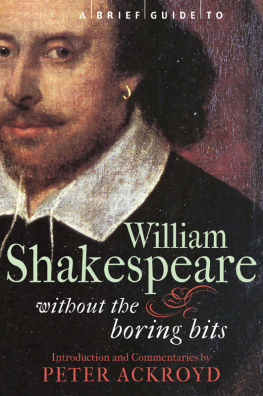
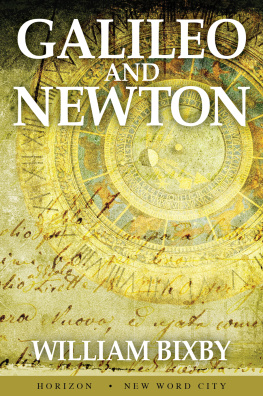
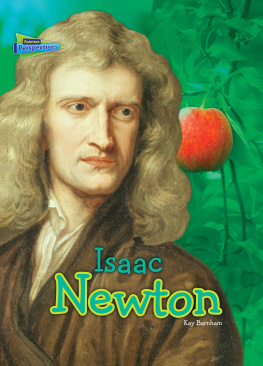
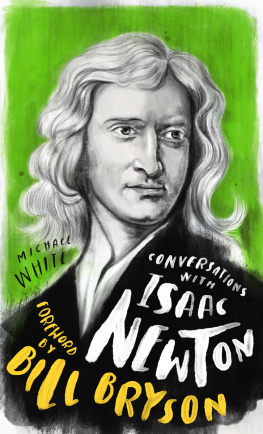

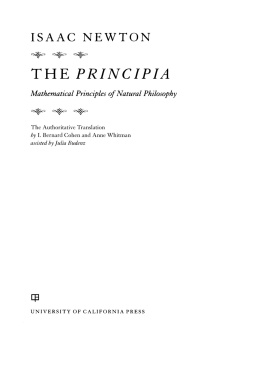
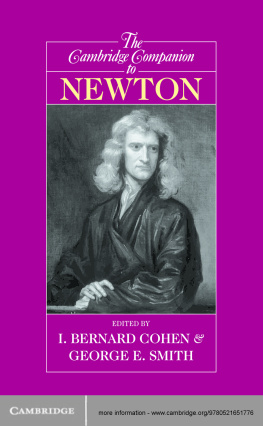
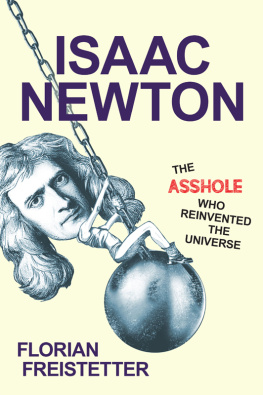





 I saac Newton, the man who more than any other has shaped modern perceptions of the world, was born at 2 a.m. on the morning of Christmas Day, 1642, outside an obscure village in Lincolnshire from a family of undistinguished yeoman stock. He was a premature and sickly infant. Two women from the household were sent to collect certain items for the child but they sate down on a stile by the way & said there was no occasion for making haste for they were sure the child would be dead before they could get back. At a later date Newton informed a relative that he had been told that when he was born he was so little they could put him into a quart pot & so weakly that he was forced to have a bolster all round his neck to keep it on his shoulders.
I saac Newton, the man who more than any other has shaped modern perceptions of the world, was born at 2 a.m. on the morning of Christmas Day, 1642, outside an obscure village in Lincolnshire from a family of undistinguished yeoman stock. He was a premature and sickly infant. Two women from the household were sent to collect certain items for the child but they sate down on a stile by the way & said there was no occasion for making haste for they were sure the child would be dead before they could get back. At a later date Newton informed a relative that he had been told that when he was born he was so little they could put him into a quart pot & so weakly that he was forced to have a bolster all round his neck to keep it on his shoulders.